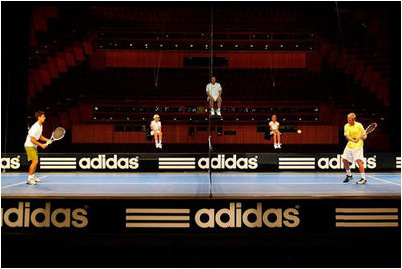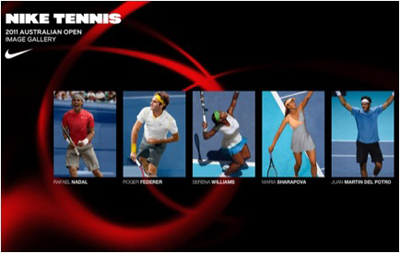"The community of sport is a powerful site for the construction of masculinity, male identities, and heterosexuality" (Kassing and Mean 126). This quote serves as an illustration of the reasons why women are depicted like they are in sports advertisements. Our society preserves sport as a tradition where only men can compete and be interested in them. However, women have broken through that barrier with the help of Title IX to include them in the participation and discussion of sports. "The increased presence of women in this community can be argued to reflect change in the substantive structure of sport as a male identity" (Kassing and Mean 127). With the inclusion of women, the sports world has indeed changed, but it can be argued whether that is for better or worse for the state of sports. I believe that it was for the better, not only in competition, but for advertisements as well. Women could show men that they were able to do things outside of the domesticated housework and challenge people believing that was all they were good for. Even though women and men's sports are separated, many areas of competition shared common trends and patterns which allow them to be similar except for the role of gender.
| Within the world of sport, there are common misconceptions and stereotypes about that sport and/or the people involved. "Sport is a major global, cultural, and economic force strongly linked to ideologies and identities" (Kassing and Mean 128). Through the ideologies our society has set out for gender, athletes create their persona based off the standards and norms we are accustomed to. We can see this happening with tennis players. The most well-known players, such as Roger Federer, Maria Sharapova, Rafael Nadal, and Serena Williams, have a representation of being great players who have been successful on the court. However, lately for some, it is more about what they are doing off the court. More frequently, a lot of athletes are featured in commercials and other advertisement to endorse a product for a company. This is where they generate a majority of their value and wealth because they use their status as great athletes to establish their status as celebrities, which helps them land large endorsements. We are starting to see more tennis players pose for advertisements not only supporting their sport, but other products as well. Having these advertisements out in the public eye allows us to be able to analyze and see the gender differences. Through semiotic analysis, psychoanalysis, and discourse analysis, we can see how sports advertising has played into the gender binaries that our society has set as the standard for women and men. All three of these methodologies will prove beneficial to gain a deeper meaning and understanding behind what the ads are trying to say and how they work. |  |
 |
Adidas and Nike are both well-known brands with a presence throughout everyday life, but we most associate them with being connected to sports. Over the span of tennis' existence as a sport, these two brands have been powerhouses when it comes to what people support and wear while they play. With them being so big, it only makes sense that they have well-known tennis players' support and promote their brand. Even though they are similar, a difference is seen between the two brands with Nike having the edge by obtaining more successful and easily recognizable players in their advertisements such as Maria Sharapova and Roger Federer. Another difference that the two brands have is how they go about displaying players and the message behind the ad, which aids in what they are trying to get across to the viewer. |
However, among their differences, a pattern has emerged from both in their depiction of women versus men within their advertisements. Nike and Adidas have chosen to show women in a sexy, athletic way which can take away from their identity as a true athlete. This is not an uncommon theme because we see it in everyday advertising for other products that are not related to sports or tennis. Their outfits in particular stand out the most because they wear skirts and tank tops that do not cover as much as opposed to what the men wear, shorts and a t-shirt. Over the years, clothing has changed for both women and men. Men used to be the ones who wore short shorts, but now the roles have reversed with women wearing the short and scandalous clothing. Most people who come across these types of advertisements are not usually thinking about buying into the product, but the companies hope they will become interested if they like what they see. "The use of sex in advertising has been a source of controversy among consumers and practitioners for over a decade. The controversy has recently intensified, perhaps because of a perception that there is an increased use of sexually provocative and suggestive content in advertisements" (Kurzbard and Soley 46). This quote backs up the claim that women are seen in a sexual way throughout all advertising, so it comes as no surprise that we see the same thing taking place in the Nike and Adidas tennis advertisements.